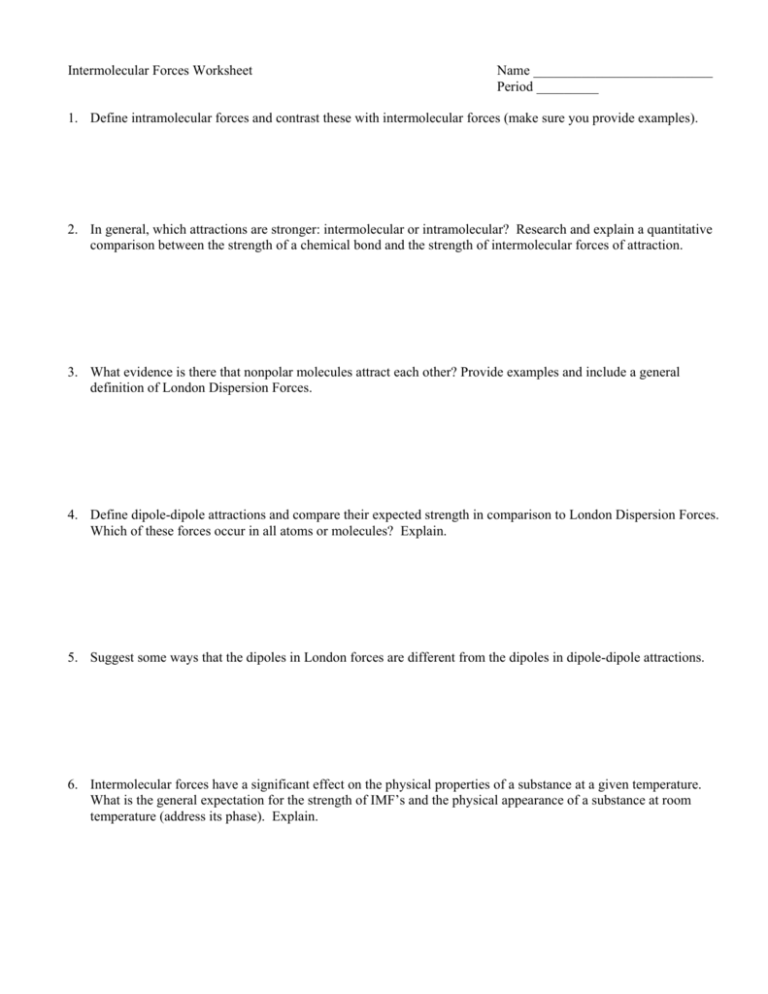Intermolecular Forces Worksheet Name Period ______ 1. Define
advertisement

Intermolecular Forces Worksheet Name __________________________ Period _________ 1. Define intramolecular forces and contrast these with intermolecular forces (make sure you provide examples). 2. In general, which attractions are stronger: intermolecular or intramolecular? Research and explain a quantitative comparison between the strength of a chemical bond and the strength of intermolecular forces of attraction. 3. What evidence is there that nonpolar molecules attract each other? Provide examples and include a general definition of London Dispersion Forces. 4. Define dipole-dipole attractions and compare their expected strength in comparison to London Dispersion Forces. Which of these forces occur in all atoms or molecules? Explain. 5. Suggest some ways that the dipoles in London forces are different from the dipoles in dipole-dipole attractions. 6. Intermolecular forces have a significant effect on the physical properties of a substance at a given temperature. What is the general expectation for the strength of IMF’s and the physical appearance of a substance at room temperature (address its phase). Explain. 7. A) Which would have a lower boiling point: O2 or F2? Explain. B) Which would have a lower boiling point: NO or O2? Explain. C) Which would have a higher boiling point: NH3 or CH4? Explain. 8. Which would you expect to have the higher melting point (or boiling point): C8H18 or C4H10? Explain. 9. What two factors cause hydrogen bonds to be so much stronger than typical dipole-dipole bonds? 10. Intramolecular forces may sometimes be classified as intermolecular forces. Explain this statement and give examples. 11. So far we have discussed four kinds of intermolecular forces: ionic, dipole-dipole, hydrogen bonding, and London dispersion forces. (i) What kind(s) of intermolecular forces are present in the following substances: (hint: consider ΔEN and molecular shape/polarity…draw a LDD if needed) (ii) Arrange the following in order of expected IMF’s (strongest to weakest). (iii) Would you rearrange the list generated for (ii) above if you were ordering them from lowest melting point to highest melting point? Explain. a) NH3, b) SF6, c) PCl3, d) LiCl, e) HBr, f) CO2











